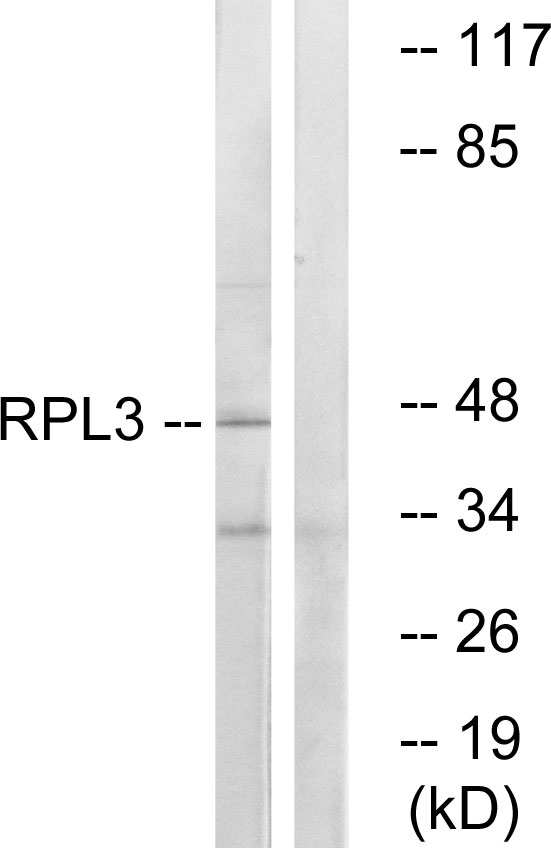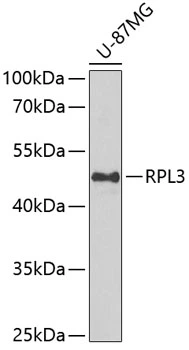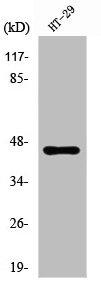RPL3 antibody [N3C3]
GTX114725
ApplicationsImmunoFluorescence, Western Blot, ImmunoCytoChemistry, ImmunoHistoChemistry, ImmunoHistoChemistry Paraffin
Product group Antibodies
ReactivityHuman, Mouse
TargetRPL3
Overview
- SupplierGeneTex
- Product NameRPL3 antibody [N3C3]
- Delivery Days Customer9
- Application Supplier NoteWB: 1:500-1:3000. ICC/IF: 1:100-1:1000. IHC-P: 1:100-1:1000. *Optimal dilutions/concentrations should be determined by the researcher.Not tested in other applications.
- ApplicationsImmunoFluorescence, Western Blot, ImmunoCytoChemistry, ImmunoHistoChemistry, ImmunoHistoChemistry Paraffin
- CertificationResearch Use Only
- ClonalityPolyclonal
- Concentration0.7 mg/ml
- ConjugateUnconjugated
- Gene ID6122
- Target nameRPL3
- Target descriptionribosomal protein L3
- Target synonymsASC-1, L3, TARBP-B, uL3, large ribosomal subunit protein uL3, 60S ribosomal protein L3, HIV-1 TAR RNA-binding protein B
- HostRabbit
- IsotypeIgG
- Protein IDP39023
- Protein NameLarge ribosomal subunit protein uL3
- Scientific DescriptionRibosomes, the complexes that catalyze protein synthesis, consist of a small 40S subunit and a large 60S subunit. Together these subunits are composed of 4 RNA species and approximately 80 structurally distinct proteins. This gene encodes a ribosomal protein that is a component of the 60S subunit. The protein belongs to the L3P family of ribosomal proteins and it is located in the cytoplasm. The protein can bind to the HIV-1 TAR mRNA, and it has been suggested that the protein contributes to tat-mediated transactivation. This gene is co-transcribed with several small nucleolar RNA genes, which are located in several of this genes introns. Alternate transcriptional splice variants, encoding different isoforms, have been characterized. As is typical for genes encoding ribosomal proteins, there are multiple processed pseudogenes of this gene dispersed through the genome. [provided by RefSeq]
- ReactivityHuman, Mouse
- Storage Instruction-20°C or -80°C,2°C to 8°C
- UNSPSC12352203
References
- Imai H, Utsumi D, Torihara H, et al. Simultaneous measurement of nascent transcriptome and translatome using 4-thiouridine metabolic RNA labeling and translating ribosome affinity purification. Nucleic Acids Res. 2023,51(14):e76. doi: 10.1093/nar/gkad545Read this paper
- Watanabe S, Fujiyama H, Takafuji T, et al. GRWD1 regulates ribosomal protein L23 levels via the ubiquitin-proteasome system. J Cell Sci. 2018,131(15):pii: jcs213009. doi: 10.1242/jcs.213009.Read this paper
- Shi J, Pabon K, Scotto KW. Methylxanthines Increase Expression of the Splicing Factor SRSF2 by Regulating Multiple Post-transcriptional Mechanisms. J Biol Chem. 2015,290(24):14986-5003. doi: 10.1074/jbc.M114.624254Read this paper





